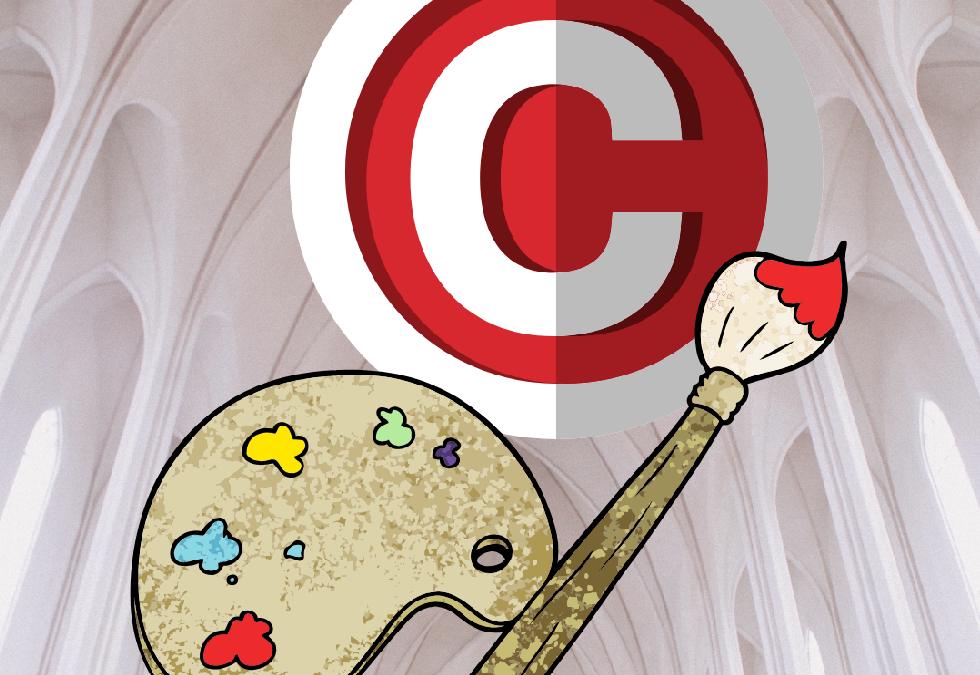Use IP Law To Protect Your Artistic Work

Artistic expression in itself is an abstract and creative process, but the work required in sharing and monetizing your art is much less abstract. Selling, marketing, and sharing your contemporary art is a task that requires less creativity and more business consideration. One consideration that artists should keep in mind is how to utilize Intellectual Property Law (IP) protection.
IP protection is important when your artistic work or creative procedure is personal and one-of-a-kind, and you want to protect yourself from the possibility of copycats. It also comes in handy when you are seeking to monetize, license, and promote your work with the public through e-commerce or retail.
Table of Contents
Types of Intellectual Property Protection
The three major types of protections within IP Law are patents, trademarks, and copyrights.
Patents grant their owners an exclusive right, for up to twenty years, over the invention described in the issued patent claim. A key aspect that distinguishes patents from other forms of IP protection is that a set of patent claims must enable a consumer of ordinary skill to reverse-engineer and utilize the invention. There are three types of patents: utility, design, and plant. Asking a patent attorney what patent you should file for is your best bet when it comes to saving money in the long run.
A trademark is a word, name, logo, symbol, device, or any combination thereof, that can be used as a method of identification for goods or services. Trademarks allow prospective customers to consider the reputation of a seller of goods or a provider of services.
A copyright protects artistic works such as literature, music, films, software, etc. Copyright protection provides the owner of the work with exclusive right to reproduce and distribute copies, prepare derivative works, as well as perform or display the work publicly. Copyright authors do not need to register their work in order to obtain the initial copyright, as they develop right away under common law, but they must be federally registered in order to be enforced.
Also Read: Essential Inbound Efforts to Evaluate in Your Website Audit
Patents
The first method of legal protection that an artist should utilize to protect his or her work is the design patent. Design patents protect the way an invention looks, while more common utility patents protect the functionality of an invention. The next question an artist might ask would be how to get a patent?
JD Houvener, a Washington DC patent attorney, says that “an inventor would seek a design patent when they have a protectable design which consists of the visual ornamental characteristics embodied in, or applied to, an article of manufacture.” In order for a design patent application to be eligible by the US Patent and Trademark Office standards, the USPTO must find that the proposed design is novel, new, and non-obvious when compared to similar prior existing product designs.
Design patents are beneficial for artists who are seeking to halt the creation of knockoffs, prevent importation of infringing products, gain credibility as a reputable artist, and market their designs.
Copyright
Copyright law allows artists to come forward with their creations for the betterment of society, an age-old practice that increases cultural participation and overall enjoyment of life. Without copyright law, artists wouldn’t be able to fairly and fully monetize their talents or make a living off of their passion.
Contemporary artists can copyright their brushstrokes, their built textures, their personal logos, or really anything that is indicative of a unique style. Artists should seek copyright registration over a particular type of look or composition or subject matter that you would like the public to identify as uniquely yours, especially if your designs are popular among collectors.
The artists who have to be most concerned about copyright infringement are those whose artistic designs have a mass or commercial appeal. They are at higher risk of their work being replicated or utilized without permission.
Trademark
Trademark law applies to show people where things come from. Trademarks can be utilized when you are trying to build up your brand, whether you are selling your art in person or online. If you have a logo that you want consumers to recognize or you have a line of art that you’d like consumers to recognize as under your brand, consider registering for federal trademark protection.
Trademarks don’t require federal registration unless you are seeking to enforce. Rather, trademarks are protected under the common law right away. As soon as you fix an expression in a tangible mean, no one else can copyright without your permission. Thus, registration is not absolutely necessary if you are only seeking to sell to family and friends on a small scale, or at fairs or showcases.
However, if you want to sell and publicize in the realm of interstate sale, which applies to those who sell their art on e-commerce platforms such as Etsy, you have to register your trademark if you plan to seek enforcement. This is important when you’re looking to sell outside your local geographic scope.
Also read: The Role and Importance of HR Managers and HR Generalists
